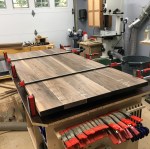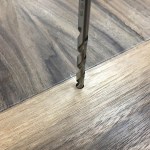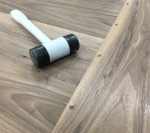The Walnut Table – A Tabletop with Breadboard Ends
The concept of breadboard ends fascinate me. Not only do they add style, but they also add stability to any wooden table top. Despite their simple appearance, designing breadboard ends takes some consideration.
Breadboard ends prevent the end of the top from cupping by restricting its movement via tenons. Unfortunately, standard mortise and tenon joiner won’t do. Wood expands and contracts more a long its width than a long its length. Consequently, you can’t glue all of the tenons in place. Otherwise, the top would pull itself a part. So, how does one allow the wood to move while keeping the breadboard ends secured? You simply pegs the tenons.
For this table, I made a total of five tenons at each end. Only the center tenon is glue. I draw bored the outside tenons with an elongated hole on the tenons (I wrote about draw boring in detail, here). The elongated hole will allow the wood on the top to expand and contract, while the draw bore pegs keep the breadboard ends tight. Unfortunately, I forgot to take a picture of the tenons. Please, forgive me.
Driving the draw bore pegs always makes me nervous. There’s a chance that the peg could split the breadboard end or break out the end of the tenon. Fortunately, neither have ever happened to me. In the end the risk is worth it. The bread board ends look great, and keep the top nice and flat.
Stay tuned.






